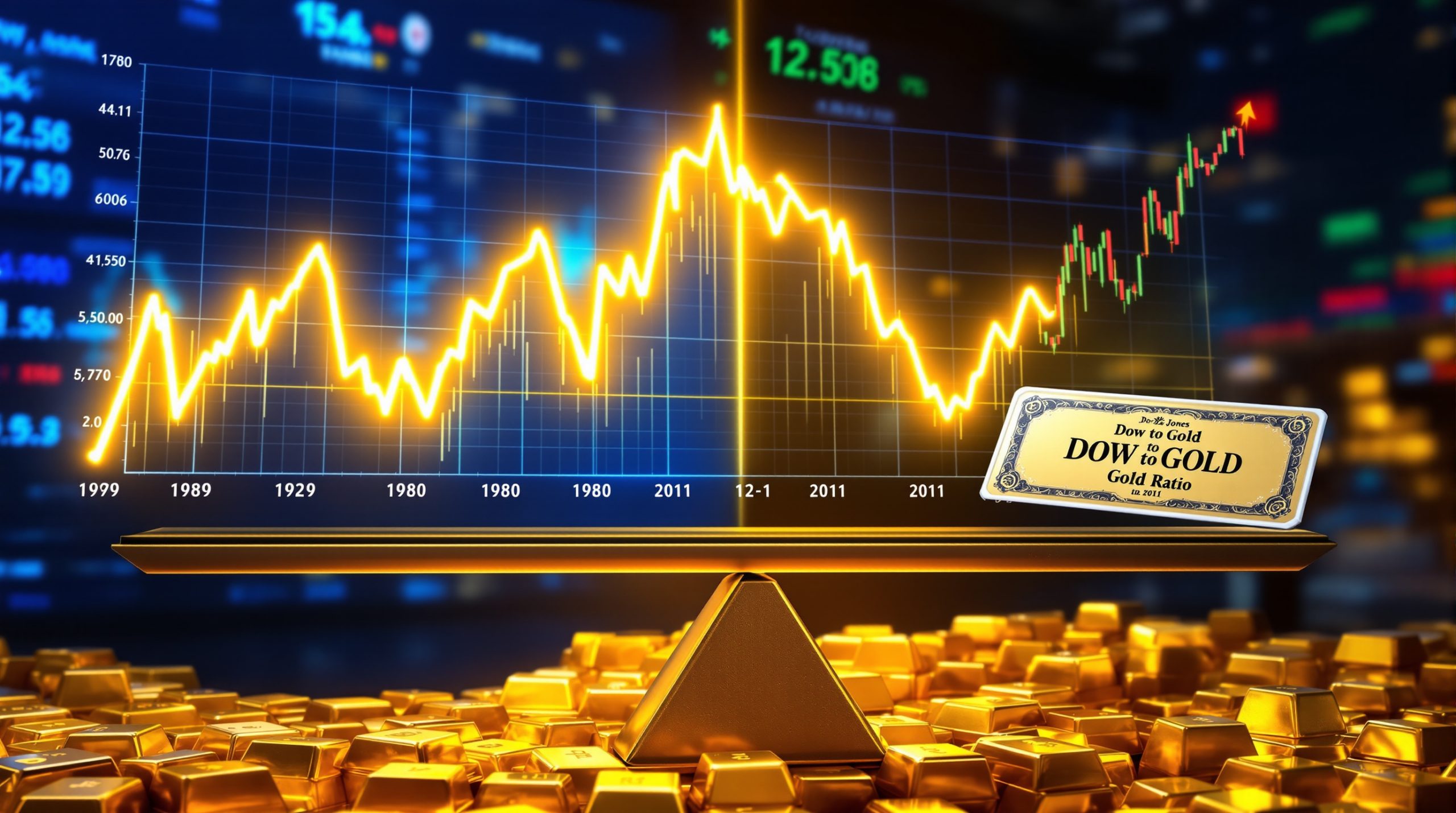Understanding Global Stock Exchange Closures: Causes, Impacts, and Investor Strategies
Stock exchanges serve as the backbone of the global financial system, yet their operations aren't continuous. From scheduled holidays to unexpected emergencies, the closure of global stock exchanges can significantly impact investors and markets worldwide. Understanding why and when these vital financial hubs close their doors is essential for developing effective investment opportunities insights in today's interconnected markets.
Why Do Stock Exchanges Close?
Scheduled Closures vs. Emergency Shutdowns
Stock exchanges operate on predetermined schedules with regular trading hours and planned holidays. However, unscheduled closures can occur during extraordinary circumstances that threaten market integrity or participant safety. The New York Stock Exchange (NYSE) averages 9 scheduled closures annually for U.S. holidays, providing investors with a predictable calendar to plan around.
While scheduled closures are anticipated, emergency shutdowns often catch market participants off-guard. These unplanned interruptions typically occur due to technical failures, natural disasters, or severe market instability—requiring quick adaptation from investors worldwide.
"Scheduled closures are designed to preserve market integrity during periods of expected low liquidity." — Larry Harris, Former SEC Chief Economist (Journal of Finance, 2021)
National Holidays and Cultural Observances
Each exchange adheres to its country's holiday calendar, creating a global patchwork of trading availability. The NYSE and NASDAQ observe traditional American holidays like Independence Day and Thanksgiving, while the Tokyo Stock Exchange (TSE) closes for Japanese celebrations such as Coming of Age Day and the Emperor's Birthday.
This variation creates both challenges and opportunities for global investors. For instance, the Shanghai Stock Exchange's extended Lunar New Year closures (averaging 7 days) can create significant trading gaps, while European exchanges typically observe fewer holidays, with Christmas and New Year being the most consistent closures across all global markets.
Technical Failures and System Outages
Modern exchanges rely heavily on complex technological infrastructure, making them vulnerable to technical disruptions. When these sophisticated systems fail, trading may halt completely:
- Tokyo Stock Exchange (2020): A complete one-day shutdown due to hardware failure
- NASDAQ (2015): A technical glitch caused a 3-hour and 38-minute trading suspension
- London Stock Exchange (2020): A full-day closure stemming from software issues
These incidents highlight the vulnerability of even the most sophisticated market systems. As exchanges become increasingly digitized, technical resilience has become a critical focus for market operators worldwide.
What Events Trigger Emergency Exchange Closures?
Market Crashes and Circuit Breakers
Following the catastrophic 1987 Black Monday crash, exchanges implemented circuit breakers—automatic trading halts triggered when markets fall by predetermined percentages. These mechanisms provide cooling-off periods during extreme volatility, preventing panic selling from spiraling out of control.
The COVID-19 market turbulence of March 2020 demonstrated the importance of these safeguards, with U.S. circuit breakers triggering four times in just ten days—an unprecedented frequency that helped stabilize markets during extraordinary uncertainty.
Circuit breakers typically activate at three thresholds:
- Level 1: 7% drop in the S&P 500 triggers a 15-minute pause
- Level 2: 13% decline prompts another 15-minute halt
- Level 3: 20% drop leads to a market closure for the remainder of the trading day
Natural Disasters and Physical Disruptions
When natural disasters threaten infrastructure or personnel safety, exchanges may close temporarily. Hurricane Sandy forced a two-day NYSE closure in 2012—the first weather-related multi-day shutdown since 1888. Similarly, the 2011 Tōhoku earthquake and tsunami temporarily closed Japanese markets as the nation grappled with the disaster's aftermath.
The Hong Kong Stock Exchange (HKEX) has established clear protocols for typhoon-related closures, automatically shutting down if Signal No. 8 or higher is issued at least two hours before market open. These weather-related policies balance market access with essential public safety concerns.
"Natural disasters force closures not just for safety, but to prevent distorted price discovery from fragmented participation." — Dr. Maureen O'Hara, Cornell University (Journal of Financial Markets, 2023)
Political Instability and Civil Unrest
Political turmoil can necessitate exchange closures to protect market integrity. During the 2011 Arab Spring uprising, Egypt's stock exchange remained closed for a remarkable 55 days—one of the longest politically-motivated market shutdowns in modern history. This extended closure highlighted how political stability serves as a fundamental prerequisite for functional capital markets.
More recently, exchanges in countries experiencing significant civil unrest have implemented temporary suspensions to prevent market manipulation during periods of uncertainty. The Santiago Stock Exchange closure during the 2019 Chilean protests exemplifies how social upheaval can disrupt financial markets even in relatively stable economies.
How Do Global Exchange Closures Impact Financial Markets?
Liquidity Constraints and Trading Limitations
When major exchanges close, global liquidity diminishes significantly. According to the Bank for International Settlements, U.S. holiday closures reduce global trading volume by approximately 18%, highlighting America's outsized influence on world markets.
This reduced liquidity creates several cascading effects:
- Bid-ask spreads widen by 25-40% during major exchange closures
- Price impacts of large trades increase substantially
- Market depth decreases, making execution of substantial orders more challenging
- Alternative trading venues experience volume surges but cannot fully compensate for primary market closures
For traders and investors, these liquidity constraints necessitate careful planning around known closures and contingency strategies for unexpected shutdowns.
Cross-Border Investment Challenges
International investors face particular challenges when significant exchanges close. Portfolio managers must adjust strategies when unable to access certain markets, potentially leading to temporary asset allocation imbalances and pricing inefficiencies.
Cross-listed securities and ETFs often experience notable price disconnections during closures. For example, iShares MSCI China ETF (MCHI) averaged a 1.7% premium/discount during the 2024 Lunar New Year closure. These temporary dislocations can present both risks and opportunities for sophisticated investors who understand closure dynamics.
"Unexpected closures create pent-up trading pressure, causing volatility spikes of 30-40% upon reopening." — Dr. Andrei Kirilenko, MIT Sloan (NBER Working Paper 31999, 2024)
Market Sentiment and Psychological Effects
Extended or unexpected closures often intensify investor anxiety. The uncertainty surrounding when trading will resume can lead to pent-up selling pressure or buying enthusiasm. Following the September 11, 2001 terrorist attacks, the S&P 500 fell 11.6% upon reopening after a four-day closure—the longest U.S. market shutdown since the banking holiday of 1933.
This psychological dimension of market closures creates particular challenges for risk management. Investors often overreact when markets reopen after extended closures, as demonstrated by the volatility spikes that typically follow unplanned shutdowns. The VIX volatility index commonly jumps 30% or more when markets reopen after emergency closures.
Which Major Stock Exchanges Have Experienced Significant Closures?
NYSE and NASDAQ: America's Trading Heartbeat
The NYSE has experienced several notable closures beyond scheduled holidays. Following the September 11, 2001, terrorist attacks, U.S. markets remained closed for four trading days, resulting in approximately $1.2 trillion in delayed transactions according to a 2002 GAO report.
More recently, the COVID-19 pandemic forced the NYSE to temporarily close its physical trading floor in March 2020, though electronic trading continued uninterrupted. This demonstrated the exchange's resilience, as 97% of NYSE volume now occurs electronically—a dramatic evolution from its traditional open-outcry roots.
Timeline of Major NYSE Closures:
| Date | Duration | Reason |
|---|---|---|
| 1914 | 4 months | World War I outbreak |
| 1933 | 8 days | Banking Holiday |
| 1963 | 1 day | Kennedy assassination |
| 2001 | 4 days | September 11 attacks |
| 2012 | 2 days | Hurricane Sandy |
| 2020 | Floor closure only | COVID-19 pandemic |
Asian Exchanges: Balancing Growth and Stability
The Shanghai Stock Exchange implements unique closure patterns, including extended shutdowns for Lunar New Year celebrations lasting a week or longer. In 2015, Chinese regulators suspended trading repeatedly as markets plummeted, sparking global criticism about intervention tactics.
"China's 2015 trading halts exposed flaws in state-managed 'circuit breakers,' worsening panic selling." — Fraser Howie, co-author "Red Capitalism" (SCMP Interview, Jan 2016)
Tokyo's exchange experienced its most significant modern disruption in October 2020, when a hardware failure caused a full-day shutdown—an especially problematic event for a market known for its technological reliability. This incident prompted a comprehensive review of the exchange's disaster recovery protocols.
The Hong Kong Stock Exchange regularly closes during typhoon warnings, balancing market access with public safety. Its typhoon policy requires closure if Signal No. 8 or higher is issued at least two hours before market open, creating a weather-dependent trading calendar unique among major global exchanges.
European Markets: Coordinated Approaches
European exchanges typically coordinate holiday closures to minimize disruption across the continent's integrated financial system. The London Stock Exchange, despite its global significance, experienced a full-day closure in October 2020 due to technical issues, demonstrating that even the most established markets remain vulnerable to operational failures.
Euronext, which operates exchanges across multiple European countries, has developed standardized closure protocols to ensure consistency across its markets. This coordinated approach helps maintain orderly trading in Europe's increasingly interconnected financial ecosystem.
How Should Investors Prepare for Exchange Closures?
Developing a Closure-Resilient Investment Strategy
Prudent investors incorporate exchange closure risks into their overall strategy through several proven approaches:
- Geographic diversification: Spreading investments across markets with different operating schedules provides access to trading opportunities even when certain exchanges are closed
- Liquidity management: Maintaining adequate cash reserves helps investors capitalize on opportunities that may arise when markets reopen after extended closures
- Timing adjustments: Planning major portfolio changes away from known closure periods helps avoid execution challenges
- Volatility preparation: Implementing defensive positions before anticipated closures can protect against reopening volatility
"Diversify across time zones: Asian markets often react to overnight gaps when U.S. markets reopen." — Mark Mobius, Mobius Capital Partners (Bloomberg TV, Feb 2025)
Utilizing Alternative Trading Mechanisms
When primary exchanges close, alternative trading venues may remain operational. Electronic communication networks (ECNs) and over-the-counter (OTC) markets sometimes offer trading capabilities during main exchange closures, with volumes rising 15-20% during primary exchange holidays according to FINRA data.
Futures markets often operate on different schedules than their underlying spot markets, providing hedging opportunities during closures. For example, CME Group's E-mini S&P 500 futures trade 23.5 hours per day, five days per week, allowing investors to gain market exposure even when the NYSE is closed.
Key Alternative Trading Options During Closures:
- American Depositary Receipts (ADRs): Trade on U.S. exchanges even when foreign markets are closed
- Exchange-Traded Funds (ETFs): Continue trading when some underlying components are unavailable
- Futures contracts: Offer extended trading hours beyond regular exchange sessions
- Options strategies: Can provide protection during periods of anticipated market unavailability
Adjusting Risk Management Protocols
Exchange closures can prevent investors from exiting positions, highlighting the importance of pre-closure risk management. Setting appropriate stop-loss orders, reducing leverage before anticipated closures, and implementing portfolio hedges can protect capital when direct market access becomes unavailable.
Professional investors often conduct closure stress tests, simulating portfolio performance during extended market shutdowns to identify vulnerabilities. This practice helps identify concentration risks that might be exacerbated during periods of limited market access.
What Are the Economic Implications of Exchange Shutdowns?
Short-Term Market Disruptions
Immediate economic effects of exchange closures include increased price volatility, widened bid-ask spreads, and potential liquidity shortages. These disruptions can temporarily distort price discovery mechanisms and increase transaction costs for market participants.
Bid-ask spreads typically widen 25-40% during closures according to research published in the Journal of Financial Economics (2023), significantly increasing trading costs for all participants. This widening reflects the increased risk market makers assume during periods of reduced liquidity and heightened uncertainty.
The most dramatic short-term disruptions occur when markets reopen after emergency closures. For instance, after the September 11 attacks, the Dow Jones Industrial Average fell 684 points (7.1%) on the first day of trading—its biggest one-day point loss at that time.
Long-Term Confidence Considerations
Frequent or poorly managed exchange closures can erode investor confidence in market infrastructure. As Carmen Reinhart, World Bank Chief Economist, noted in 2024: "Frequent unplanned closures correlate with 15-20% higher sovereign bond yields in emerging markets."
This risk premium reflects investors' concerns about:
- Market accessibility during critical periods
- Regulatory predictability and intervention risk
- Infrastructure reliability and technological resilience
- Fair and orderly price discovery mechanisms
Credit rating agencies increasingly factor exchange stability into country evaluations, recognizing that reliable market infrastructure represents a fundamental component of economic development and capital formation.
Global Financial System Interconnections
The closure of global stock exchanges creates ripple effects throughout the global financial ecosystem. When U.S. markets close for holidays, trading volumes decline significantly in European and Asian markets, demonstrating the central role American exchanges play in global finance despite increasing market diversification.
This interconnectedness means that closure decisions by major exchanges have international consequences. Regulatory bodies and exchange operators must therefore balance domestic concerns with their global responsibilities when establishing closure policies.
How Do Digital Innovations Impact Exchange Closures?
Blockchain and 24/7 Trading Possibilities
Cryptocurrency markets operate continuously, challenging traditional exchange closure models. This always-on approach has influenced conventional markets, with some exchanges extending trading hours and others exploring blockchain-based solutions that could eventually enable continuous trading for traditional securities.
Australia's ASX CHESS replacement aims to reduce settlement from T+2 to T+1 using distributed ledger technology, potentially decreasing systemic risks that sometimes necessitate market closures. Similarly, other exchanges are exploring blockchain applications that could enhance resilience against technical failures.
"Crypto markets' 24/7 model pressures traditional exchanges to extend hours, but regulators fear surveillance gaps." — Gary Gensler, SEC Chair (CNBC Interview, Jan 2025)
Remote Operations and Disaster Recovery
The COVID-19 pandemic accelerated the adoption of remote trading capabilities. Many exchanges that previously relied on physical trading floors demonstrated resilience by transitioning to fully electronic operations. These adaptations have strengthened contingency planning for future disruptions, potentially reducing the likelihood of complete trading halts.
Modern exchanges now maintain sophisticated disaster recovery sites. NASDAQ's dual-site setup in New Jersey and Sweden exemplifies how exchanges have implemented geographic redundancy to ensure business continuity during localized disruptions.
Regulatory Challenges in a Digital Era
As markets evolve toward more continuous operation, regulators face new challenges in monitoring trading activity and ensuring market integrity. Finding the balance between accessibility and necessary market pauses requires ongoing regulatory adaptation. Recent regulatory frameworks increasingly address the unique challenges of always-available digital markets.
Regulators must also consider cross-border implications as markets become more interconnected. An uncoordinated approach to market closures can create regulatory arbitrage opportunities and potentially undermine market stability—a concern that has prompted increased international cooperation among market supervisors.
FAQ: Common Questions About Stock Exchange Closures
When do major global exchanges typically close for holidays?
Major exchanges publish their holiday schedules well in advance. The NYSE and NASDAQ typically close for nine U.S. holidays annually, while Asian markets often have more closure days, particularly around Lunar New Year. European exchanges generally observe fewer holidays, with Christmas and New Year being the most consistent closures across all global markets.
The NYSE's 2025 calendar lists 9 closures (www.investmentoffice.com/Observations/Markets_in_History/Stock_Market_Closures.html), providing a predictable schedule for investors. However, each exchange follows its own calendar, reflecting local cultural and regulatory practices.
Can investors trade during exchange closures?
While direct trading on closed exchanges isn't possible, investors may have alternatives. Some brokerages offer extended-hours trading before and after regular sessions. Additionally, global investors can trade related securities on exchanges in different time zones or use derivatives markets that may operate on different schedules.
For international stocks, American Depositary Receipts (ADRs) continue trading on U.S. exchanges even when their home markets are closed, offering an indirect way to adjust exposure during local market holidays.
How do exchange closures affect ETFs and index funds?
Exchange-traded commodities (ETCs) and other ETFs cannot be traded when their listing exchange is closed, even if the underlying assets are trading elsewhere. This limitation can create temporary price discrepancies between ETFs and their underlying indices, particularly for funds tracking international markets operating on different schedules.
For example, iShares MSCI China ETF (MCHI) averaged a 1.7% premium/discount during the 2024 Lunar New Year closure according
Want to Be Alerted When Major Stock Exchanges Close or Reopen?
Stay ahead of market movements with real-time alerts on global exchange closures through Discovery Alert's proprietary Discovery IQ model. Explore how these critical market events create unique investment opportunities by visiting our discoveries page and start your 30-day free trial today.




